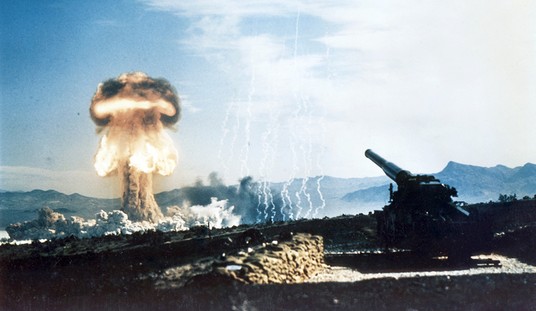
A line of mostly students wait to vote at a Texas primary election polling site on the University of Texas campus, Tuesday, March 6, 2018, in Austin, Texas. (AP Photo/Eric Gay)
After the special election for OH-12, the watch word was “intensity.” A GOP candidate eked out a win in a district that went for Trump by 11 points in 2016. This was supposed to be a harbinger for Novemeber when the pink slime blue wave will engulf the GOP based on millions of angry NeverTrump voices…some of which might even be Democrats.
Yesterday, there were primaries in two key states, Florida and Arizona. Both are sorta red-trending-to-purple. There are two senate seats at stake, and Jeff Flake’s is seen as the most vulnerable to flipping and Bill Nelson is regarded as one of the safest Red State Democrat seats up for grabs this year. Unlike a single congressional seat that can be flooded with money and media attention, these two states provide an interesting test bed.
Let’s look at Florida, first.
Currently, there are 4,594,373 registered Republicans and 4,840,119 registered Democrats in Florida.

From NYT https://www.nytimes.com/interactive/2018/08/28/us/elections/florida-primary-elections.html
Democrat turnout was 31.2%.
Republican turnout was 35.2%.
Now Arizona.
Arizona has 1,096,747 registered Democrats and 1,262,989 registered Republicans.

From NYT https://www.nytimes.com/interactive/2018/08/28/us/elections/arizona-primary-elections.html
Democrat turnout was 35.3%.
Republican turnout was 39.6%.
Clearly, when you spread the battlefield out so that money and media can’t swamp one congressional district, Democrat intensity doesn’t seem to exist outside of opinion polls. In both Florida and Arizona, GOP turnout led Democrat by four points. The unknown in the mix are those unaffiliated voters and your assumptions of their behavior. If you assume they are unaffiliated voters who hate Trump, you get one outcome. If you assume these voters are closer to what showed up to vote in 2016, then you get another.
The GOP faces a tough 2018. The unprecedented number of retirements combined with the historical pattern of the party holding the presidency losing seats at midterm elections (though not certainty, George Bush gained House seats in 2002) and the polarizing nature of President Trump create an unsettled environment. But, if AZ and FL are any guide, 2018 will me closer to a typical mid-term than it will be to a wave election like 2006 or 2010.
=========
=========
Like what you see? Then visit my story archive.
Follow @streiffredstate
I’m on Facebook. Drop by and join the fun there.
=========
=========













Join the conversation as a VIP Member